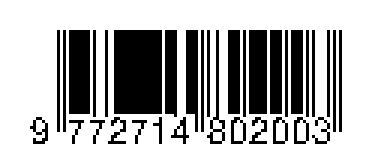ANT-WUM: ALGORITMA BERBASIS ANT COLONY OPTIMIZATION UNTUK WEB USAGE MINING
DOI:
https://doi.org/10.34151/technoscientia.v2i1.67Keywords:
Ant-Miner, Ant-WUM, Heuristic function, Web usage miningAbstract
This paper is continuity research from our previous work in Ant-Miner implementation for web user classification. In our previous work, we implemented Ant-Miner algorithm for web user classification same with Ant-Miner for classification task in data mining domain. In this paper, we propose modification of heuristic function of Ant-Miner based on web usage mining (WUM) problem, that we name Ant-WUM. The heuristic function ACO is based on local problem domain. Information theory is common heuristic function used in classification task, such as implemented in C4.5 algorithm and ant-miner algorithm. Ant-WUM uses heuristic function based on closeness principle that implemented in clustering problem in WUM. We propose to use data from web access log, profile user, and transaction data to provide some attributes as term candidate of classification rule by Ant-WUM algorithm. We compared Ant-WUM algorithm with Ant-Miner algorithm. The result indicates that Ant-WUM has competitive result in term of accuracy rate, amount of rules, and computation time.
References
Abdurrahman, 2004, Pemodelan Customer Churn Management Berbasis CRM Studi Kasus PT. Tele-komunikasi Indonesia, Tbk, Tesis Magister Teknik Informatika, ITB.
Abraham, A., 2003, Business Intelligen-ce From Web Usage Mining, Journal of Information & Knowledge Management, Vol. 2, No. 4, p. 375-390.
Abraham, A., et al, 2005, Web Usage Mining Using Artificial Ant Colo-ny Clustering and Linear Genetic Programming, cs.okstate.edu
Bonabeu, E., et al, 1999, Swarm Intelli-gence: From Natural to Artificial Systems, New York, NY, Oxford University Press.
Cover, T.M., et al, 1991, Elements of In-formation Theory, New York, NY, John Willey & Sons.
Dorigo, M., et.al, 1999, The Ant Colony Optimization Meta-heuristik, New Ideas in Optimization, D.Corn, M. Dorigo and F. Glover Eds. London, McGrawHill, p.11-32.
Grear, M., 2006, User Profiling: Web Usage Mining, http://www.ijs.si.
Holden, N., et.al, 2007, Web Page Classification with an Ant Colony Optimization, kent.ac.uk.
J.R Quinlan, 1993, C4.5: Programs for Machine Learning, San Fransisco, CA: Morgan Kaufmann.
Jaideep, S., et al, 2000, Web Usage Mining: Discovery and Applications of Usage Patterns from Web Data, ACM SIGKDD (Spe-cial Interest Group on Knowledge Discovery and Data.
Lopes, 1998, An Evolution Approach to Simulate Cognitive Learning in Medical Domain in Genetic Algorithm and Fuzzy Logic Systems: Soft Computing Perspctive, Singapore World Scientific, p. 193-207.
Parpinelli, R.S, et al, 2002, Data Mining with an Ant Colony Optimization Algorithm, IEEE Transaction on Evolutionary Computation, special issue on Ant Colony Algo-rithm, v.6, p.321-332.
Pramudiono, I., 2004, Parallel Platform for Large Scale Web Usage Mining, Tesis Ph.D, Universitas Tokyo.
Padmajavalli, R., 2006, An Overview of Data Pre-Processing in Web Usage Mining, The ICFAI Journal of Information Technology, Vol. 2, No. 3, pp. 55-66.
Ramadhan, H., et al, 2005, A Classification on Techniques for Web Usage Analysis, Journal of Computer Science 1(3), p. 413-418, Science Publication.
Spiliopoulou, M., et al, 2007, A Data Miner Analyzing the Navigational Behavior of Web Users, www.huberlin.de.







